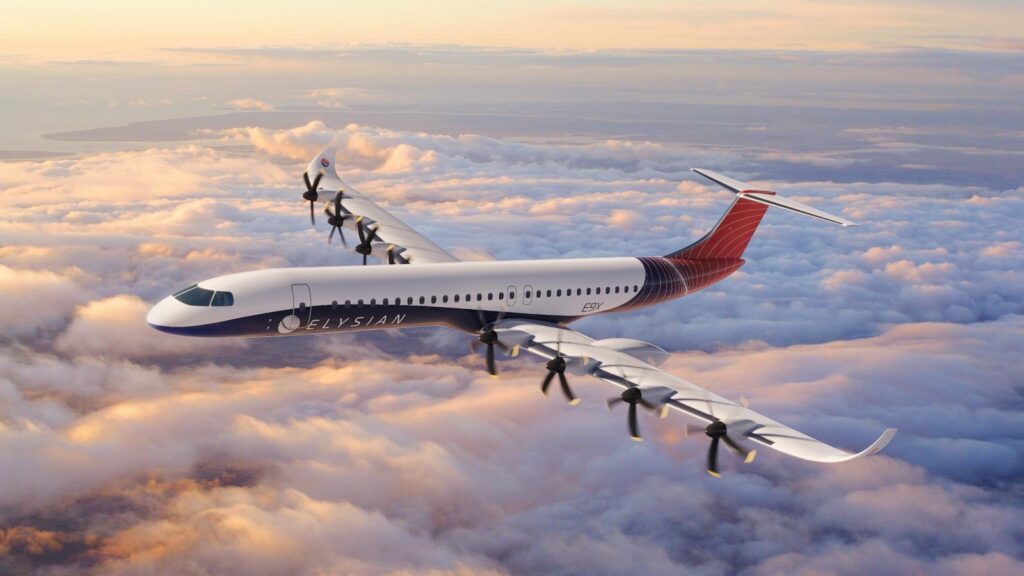In the ever-evolving landscape of aviation, where the quest for sustainability meets the thrill of innovation, the Massachusetts Institute of Technology (MIT) has once again taken center stage. Their latest report delves into the tantalizing advancements in electric aircraft technology, painting a picture of a future where flying is not only efficient but also environmentally friendly. As the industry grapples with the pressing need to reduce carbon emissions and embrace greener practices, this report serves as a beacon of hope, illuminating the path towards electrified skies. In this article, we will explore the key findings of the MIT team’s research, the implications for the aviation sector, and the exciting possibilities that lie ahead in harnessing electric propulsion for air travel. Buckle up as we take off into a world of cutting-edge technology and visionary concepts that could redefine how we fly.
Innovative Breakthroughs in Electric Aircraft Technology
Recent developments from the MIT team highlight a wave of innovative breakthroughs in electric aircraft technology that are poised to revolutionize aviation as we know it. This research indicates a significant leap in battery efficiency and lightweight materials, which together are setting the stage for more sustainable and cost-effective air travel. The advancements suggest that future electric aircraft could achieve ranges comparable to their traditional fuel counterparts, thereby bridging the gap between current limitations and the ambitious goals of the aviation industry.
The report notably emphasizes the integration of advanced propulsion systems and autonomous navigation technologies that enhance safety and operational efficiency. Key benefits include:
- Reduced Operational Costs: Lower energy requirements lead to significant savings for airlines.
- Environmentally Friendly: Decreased carbon emissions contribute to a more sustainable future.
- Noise Reduction: Quieter flight operations improve community relations around airports.
| Technology | Description |
|---|---|
| Solid-State Batteries | Higher energy density with improved safety over traditional lithium-ion batteries. |
| Composite Materials | Lightweight and strong materials that enhance aircraft performance. |
| Brushless Electric Motors | Increased efficiency and reduced maintenance costs. |
Key Insights from MITs Pioneering Research
The report from MIT’s team unveils several groundbreaking developments in electric aircraft technology, providing a wealth of insights that could potentially redefine the aviation industry. Among the key discoveries highlighted, the following stand out:
- Improved Energy Efficiency: Innovations in battery technology promise to significantly reduce the energy consumption of electric aircraft.
- Enhanced Aerodynamics: The use of advanced materials and design methodologies allows for lighter structures, which contribute to better fuel economy.
- Noise Reduction Techniques: New propulsion systems are designed to operate more quietly, thus addressing noise pollution concerns in urban areas.
Moreover, the research presents a comprehensive analysis of potential economic benefits and environmental impacts of electric aircraft. A detailed comparison illustrates how these innovations stack up against conventional aircraft:
| Aspect | Conventional Aircraft | Electric Aircraft |
|---|---|---|
| Operating Costs | High | Lower |
| Emissions | Significant | Minimal |
| Noise Pollution | High | Reduced |
These findings underscore the potential for integrating electric aircraft into the broader aviation ecosystem, paving the way for a more sustainable future in air travel.
Recommendations for the Future of Sustainable Aviation
The future of aviation hinges on our ability to embrace innovative technologies that minimize environmental impact while enhancing efficiency. To foster the growth of sustainable aviation, stakeholders should prioritize the following strategies:
- Investment in Research and Development: Allocate resources to further explore advancements in electric propulsion and battery technology.
- Collaboration among industry players: Encourage partnerships between aerospace manufacturers, technology firms, and governments to accelerate the adoption of electric aircraft.
- Regulatory frameworks: Develop supportive regulations that foster innovation while ensuring safety and environmental standards are met.
- Public awareness campaigns: Promote the benefits of electric aircraft to gain public support and encourage investment in sustainable aviation initiatives.
Furthermore, the integration of renewable energy sources into airport operations can significantly enhance the sustainability of air travel. The adoption of hybrid models may serve as an effective transitional phase, paving the way toward fully electric fleets. Consider the following potential avenues for achieving this goal:
| Strategy | Potential Impact |
|---|---|
| Solar-Powered Airport Operations | Reduction in carbon footprint and energy costs |
| Hydrogen Fuel Cells | Enabling longer flight ranges for electric aircraft |
| Battery Recycling Programs | Minimizing waste and enhancing resource efficiency |
The Conclusion
As we navigate the skies of innovation, the recent report from the MIT team on electric aircraft technology offers a tantalizing glimpse into the future of aviation. With the potential to revolutionize travel with reduced emissions and enhanced efficiency, this groundbreaking research serves as a crucial stepping stone toward a more sustainable aerial landscape. As the industry takes note and advances are made, we can only imagine the profound impact this will have on our approach to air travel. While the journey towards fully electric flight is just beginning, the insights and developments shared in this report are sure to inspire both researchers and aviation enthusiasts alike. As we keep our eyes on the horizon, let us remain curious and engaged with the evolution of electric aircraft, watching as they soar from conception to reality.
